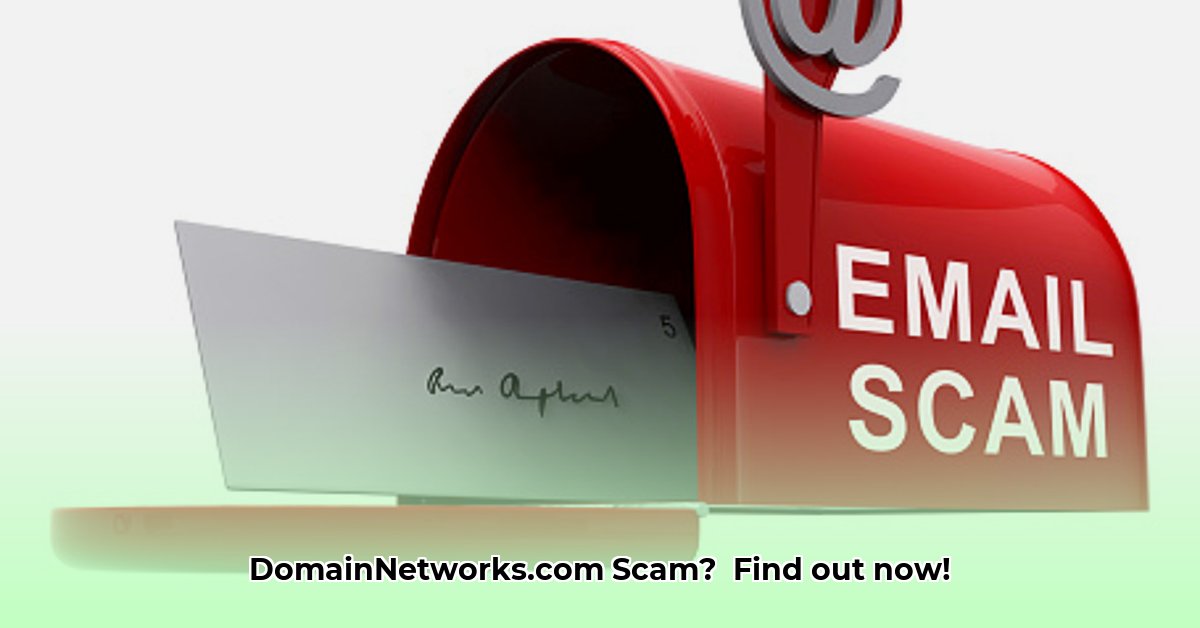
DomainNetworks.com is behind a widespread invoice scam targeting businesses, resulting in significant financial losses. This guide provides actionable steps to identify, respond to, and prevent this fraudulent activity.
Identifying a Fake DomainNetworks Invoice
DomainNetworks invoices often appear legitimate at first glance, mimicking official billing documents. However, several red flags can help you identify a scam:
- Vague Services: The invoice describes services vaguely (e.g., "website maintenance") without specifying details. Legitimate invoices are clear and precise.
- Unfamiliar Branding: The invoice’s logo, design, or wording differs from the expected branding of your legitimate service provider. A quick check of the company's website can reveal inconsistencies.
- PO Box Address: Many scam invoices use PO boxes rather than verifiable business addresses. Legitimate companies generally have a physical address.
- Urgent Payment Demands: The invoice demands immediate payment and threatens negative consequences for delayed payments. Legitimate businesses rarely employ such aggressive tactics.
- Suspicious Payment Methods: The invoice might only accept payment via wire transfer, prepaid debit cards, or cryptocurrency, making it difficult to trace payments and recover funds. Legitimate businesses offer multiple payment options.
Verifying Invoice Authenticity: A Step-by-Step Approach
Before making any payment, take these steps to verify the invoice's authenticity:
- Contact Your Registrar Directly: This is the most crucial step. Call your actual domain registrar (e.g., GoDaddy, Namecheap, Google Domains) and inquire about the invoice. A legitimate invoice will be confirmed through your registrar's records.
- Online Investigations: Search online for "DomainNetworks.com scam" or similar keywords. Check reputable sources like the Better Business Bureau (BBB) and the Federal Trade Commission (FTC) for scam reports.
- Examine the Fine Print: Carefully review the invoice's terms and conditions. Look for inconsistencies, grammatical errors, or confusing language, all common in fraudulent documents.
- Check Payment Options: Legitimate businesses typically provide multiple payment methods. If the invoice only lists one obscure method, it's a significant red flag.
Responding to a Suspected Scam: A Reactive Plan
If you suspect an invoice is fraudulent:
- Do Not Pay: Paying validates the scam and encourages further attempts.
- Report the Scam: Immediately file a report with the Federal Trade Commission (FTC) at https://reportfraud.ftc.gov/ and your local law enforcement agency. Document everything—emails, invoices, and communications.
- Monitor Your Accounts: Closely monitor your bank accounts and credit card statements for unauthorized transactions. Report any suspicious activity to your financial institution immediately.
- Document Everything: Keep detailed records of all communication, including screenshots of emails and printed copies of invoices. This documentation will be crucial if you need to pursue legal action.
Preventing Future Scams: Proactive Measures
Proactive measures are the most effective way to prevent becoming a victim:
- Establish Clear Internal Protocols: Implement a process for verifying invoices before payment. This should include multiple levels of approval and verification.
- Train Your Employees: Conduct regular training sessions to educate employees about identifying fraudulent invoices and best practices.
- Improve Internal Communication: Encourage reporting of suspicious emails or invoices immediately to the appropriate personnel. Ensure a prompt response mechanism.
- Regular Security Audits: Conduct regular security assessments to identify weaknesses and enhance your defenses against phishing and other scams.
Understanding the Broader Scam Network
DomainNetworks.com is likely one element of a larger, evolving scam operation using various names and tactics to evade detection. This makes tracing the perpetrators challenging.
Risk Assessment Matrix
This table summarizes the potential risks and mitigation strategies:
| Risk Category | Likelihood (High/Medium/Low) | Impact (High/Medium/Low) | Mitigation Strategy |
|---|---|---|---|
| Financial Loss | High | High | Strict invoice verification; employee training; strong accounting controls |
| Reputational Damage | Medium | Medium | Prompt response to incidents; transparent communication |
| Operational Disruption | Low | Low | Established protocols for handling suspicious communications |
By staying vigilant and following these guidelines, businesses can significantly reduce their risk of falling victim to DomainNetworks.com and similar invoice scams. Share this information to raise awareness among your colleagues and fellow business owners.